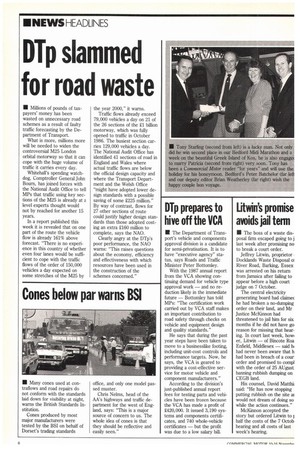Dip slammed for road waste
Page 6

If you've noticed an error in this article please click here to report it so we can fix it.
• Millions of pounds of taxpayers' money has been wasted on unnecessary road schemes as a result of faulty traffic forecasting by the Department of Transport.
What is more, millions more will be needed to widen the controversial M25 London orbital motorway so that it can cope with the huge volume of traffic it carries every day.
Whitehall's spending watchdog, Comptroller General John Bourn, has joined forces with the National Audit Office to tell MPs that traffic using key sections of the M25 is already at a level experts thought would not by reached for another 15 years.
In a report published this week it is revealed that on one part of the route the vehicle flow is already 161% above forecast. "There is no experience in this country of whether even four lanes would be sufficient to cope with the traffic flows of the order of 150,000 vehicles a day expected on some stretches of the M25 by the year 2000," it warns.
Traffic flows already exceed 79,000 vehicles a day on 21 of the 26 sections of the 21 billion motorway, which was fully opened to traffic in October 1986. The busiest section carries 129,000 vehicles a day. The National Audit Office has identified 41 sections of road in England and Wales where actual traffic flows are below the official design capacity and where the Transport Department and the Welsh Office "might have adopted lower design standards with a possible saving of some £225 million." By way of contrast, flows for 27 other sections of route could justify higher design standards than those adopted costing an extra 2160 million to complete, says the NAO.
Clearly angry at the DTp's poor performance, the NAO warns: "This raises questions about the economy, efficiency and effectiveness with which resources have been used in the construction of the schemes concerned."
















































